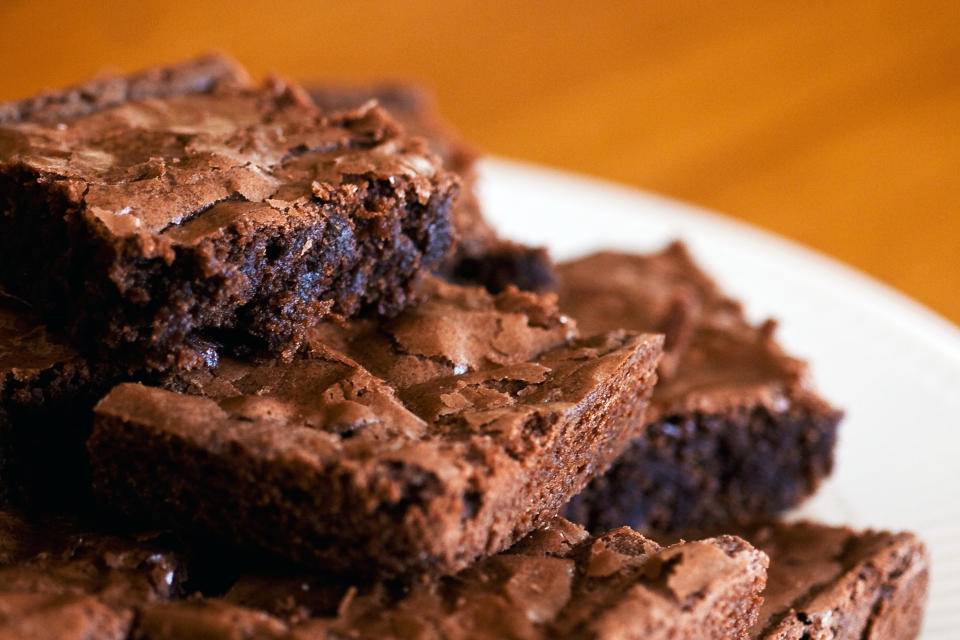11-year-old student is suspended after unknowingly eating a pot-laced cookie

A sixth grader who was hospitalized for unknowingly eating a baked good laced with marijuana has been suspended from school.
On Friday, after eating a cookie given to her by a female classmate, 11-year-old Diamond Brooks, a student at Columbia Middle School in Decatur, Ga., felt disoriented and had weakened vision.
“I didn’t pay attention when I was getting it, so I just got it and ate it,” Diamond, whose family Yahoo Lifestyle could not reach for comment, told Atlanta local news station WSB-TV. “If she told me what was in it, I never would have got it from her.”
The school sent Diamond to the hospital, where doctors said she had consumed marijuana. The DeKalb County School District is conducting an investigation, but in the meantime, Diamond is suspended for five days, a punishment that her father claims is unfair.
“She didn’t know what it was. She didn’t intentionally do no drugs,” Gary Johnson told the station. He added, “When you spike somebody’s drink, they don’t know, so they are supposed to get punished for what happened? That don’t make sense.”
The school said it would send Yahoo Lifestyle a comment but has not yet done so; however, on Friday, it told WSB-TV, “The student ingested a dessert, but it cannot confirm if it was laced with a drug. Our investigation will shed more light on what occurred.”

Marijuana contains a chemical called tetrahydrocannabinol, aka THC, which provides that mind-altering buzz. According to LiveScience, the brain houses cannabinoid receptors in areas associated with thinking, memory, pleasure, and coordination. When TCH is smoked or otherwise consumed, it fastens to the receptors and affects how a person thinks, feels, and moves.
THC releases a euphoric neurotransmitter called dopamine, making the user feel giddy. But it can also cause anxiety, forgetfulness, and impaired motor skills, affecting actions such as driving. According to Children’s Hospital Colorado, due to a child’s height and weight, it’s easier to overdose on marijuana, and as a result, most need to be hospitalized, although the long-term effects are unknown.
It’s surprisingly common for kids to accidentally get high from pot-laced desserts. In January, Newsweek reported that a 9-year-old from Albuquerque brought gummy bears to school to share with her three friends, not knowing that the sweets (which she took from her grandfather) contained THC. All four children required medical treatment after reporting blurred vision and dizziness.
In May 2016, two high school students were hospitalized after purchasing pot-laced brownies from a classmate, causing one to have a “laugh attack” and increased heart rate, which doctors said could have resulted in a stroke. And in 2013, seven children between 10 and 12 years old experienced vomiting and difficulty breathing after unknowingly consuming a brownie baked with pot.
According to the Centers for Disease Control and Prevention (CDC), the amount of THC in “edibles,” food cooked or ingested with the chemical, is estimated to be much higher than in a traditional joint and therefore poses more dangers. After one consumes an edible, it can take anywhere from 30 minutes to two hours to feel the effects, a wide and dangerous time gap that can cause one to eat more to obtain a high.
It’s also harder to monitor the potency of, say, a sheet of pot brownies than a single joint. “For example, in states where recreational marijuana use is legal, one cookie or brownie might contain multiple “servings” in the product or package,” per the CDC website. “That means a single marijuana cookie or brownie, or any other marijuana edible, might contain as much as 100 mg of THC. So if someone ate an entire cookie or brownie — each one a single ‘serving’ — it would be like taking many hits of a marijuana cigarette at one time.”
One study from the University of Colorado that observed an increase in unintentional consumption of pot-laced edibles after the state legalized pot found that kids were eating stuff their parents had left lying around. “The caretakers were leaving these in plain sight of children and outside of child-safe packaging,” study author Genie Roosevelt, MD, told CBS News. “We’d like people to think of these products as medication. Stored out of sight and away from children, like your aunt’s diabetic medication. We need to make that cultural leap.”
Read more from Yahoo Lifestyle:
Mom of boy who suffered near-fatal allergic reaction on flight says airline didn’t do enough
Why do some teenage girls hide their pregnancies and harm their babies?
Internet fights back after Parkland students are slammed for laughing
Follow us on Instagram, Facebook, and Twitter for nonstop inspiration delivered fresh to your feed, every day.

